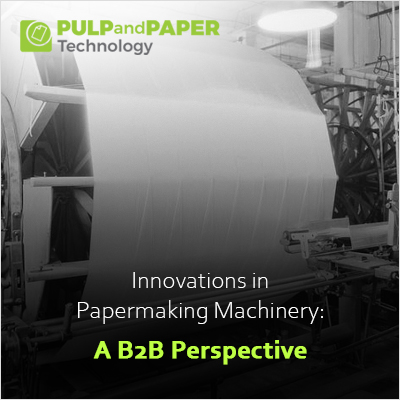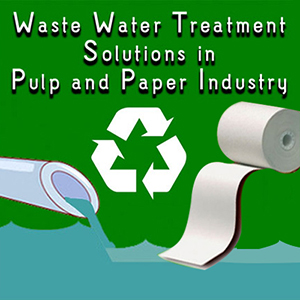Innovations in Papermaking Machinery: A B2B Perspective

In the dynamic world of pulp and paper manufacturing, technological innovations play a pivotal role in enhancing efficiency, optimizing processes, and meeting the evolving needs of B2B clients. In this comprehensive exploration, we delve into the latest advancements in papermaking machinery, how these innovations are reshaping the industry and the significant benefits they offer for businesses engaged in the production of paper products.
I. Introduction
The pulp and paper industry, a cornerstone of global manufacturing, has witnessed a transformative wave of innovations in recent years. From automated systems to intelligent machinery, the sector has embraced cutting-edge technologies to stay ahead in a competitive landscape. This article focuses on the B2B perspective, examining how innovations in papermaking machinery are influencing operational efficiency, product quality, and overall competitiveness for businesses.
II. Automation and Smart Manufacturing
The integration of automation and smart manufacturing solutions stands out as a significant trend in papermaking machinery. Cutting-edge control systems, powered by artificial intelligence (AI) and machine learning algorithms, are reshaping the operational dynamics of paper mills. This evolution brings tangible benefits to B2B clients, including heightened precision in production processes, reduced downtime, and improved overall equipment effectiveness (OEE).
Automated systems are capable of real-time monitoring and adjustment, ensuring that paper manufacturers can maintain consistent product quality while optimizing resource utilization. This level of control provides B2B clients with a competitive edge, allowing them to deliver reliable and high-quality paper products to their customers.
III. Precision and Speed in Paper Manufacturing
In the competitive arena of the pulp and paper industry, the pivotal factors are speed and precision. Innovations in papermaking machinery have concentrated on augmenting the production speed without compromising the quality of the final product.
High-speed paper machines equipped with advanced technology can achieve remarkable production rates while maintaining the integrity of the paper. B2B clients can benefit from these innovations by meeting tighter deadlines, fulfilling large orders efficiently, and staying responsive to market demands.
IV. Energy Efficiency and Sustainability
The rising focus on sustainability is a shared concern among consumers and businesses alike. Paper manufacturers are progressively embracing machinery innovations that prioritize both energy efficiency and sustainability. Contemporary papermaking machinery integrates eco-friendly elements, including energy-efficient motors, systems for recovering waste heat, and the utilization of renewable energy sources.
B2B clients in the pulp and paper industry are aligning their operations with sustainable practices not only to meet regulatory requirements but also to appeal to environmentally conscious consumers. By investing in machinery that reduces energy consumption and minimizes environmental impact, businesses can enhance their corporate image and contribute to a greener future.
V. Customization and Flexibility
The diverse demands of B2B clients require a high degree of flexibility in paper manufacturing. Innovations in papermaking machinery are addressing this need by providing customizable solutions that cater to specific requirements.
Modular machinery designs allow for easy adaptation to different paper grades, sizes, and thicknesses. B2B clients can benefit from the versatility of these machines, enabling them to diversify their product offerings and respond swiftly to changes in market trends.
VI. The Dawn of Industry 4.0 in Paper Manufacturing
A critical aspect of the ongoing innovation in papermaking machinery is the integration of Industry 4.0 principles. The convergence of digital technologies, the Internet of Things (IoT), and data analytics is ushering in a new era for the industry. Paper mills are becoming increasingly interconnected, creating a network of smart devices and systems that communicate seamlessly.
Industry 4.0 enables predictive maintenance, reducing the risk of unexpected breakdowns and optimizing maintenance schedules. This proactive approach not only extends the lifespan of machinery but also minimizes downtime, ensuring a continuous and efficient production process for B2B clients.
Conclusion
As the pulp and paper industry undergoes continuous evolution, B2B clients find enticing opportunities to elevate their operations through advancements in papermaking machinery. Ranging from automation and smart manufacturing to sustainable practices, customization, and the incorporation of Industry 4.0, the latest innovations bring forth a myriad of advantages. These encompass heightened efficiency, enhanced product quality, a diminished environmental impact, and the capacity to adeptly navigate the challenges posed by a dynamically changing market.
In a competitive marketplace, staying abreast of these technological developments is essential for businesses seeking to thrive in the dynamic landscape of pulp and paper manufacturing. Embracing these innovations not only positions B2B clients as industry leaders but also contributes to the overall advancement of the sector, ensuring a sustainable and prosperous future for all stakeholders involved.








